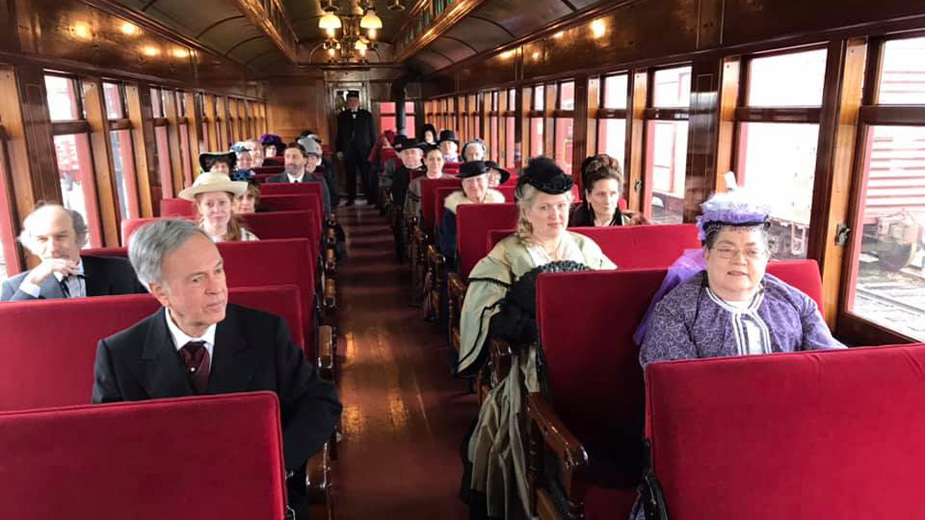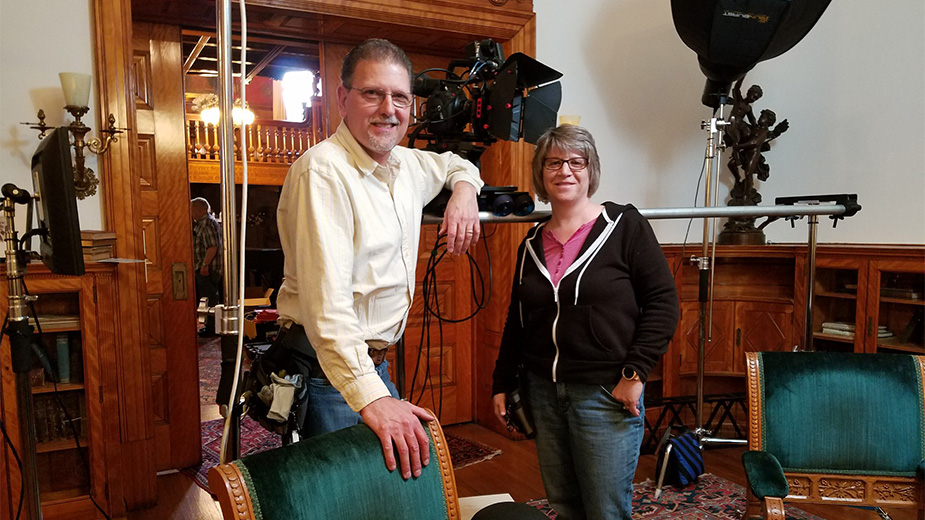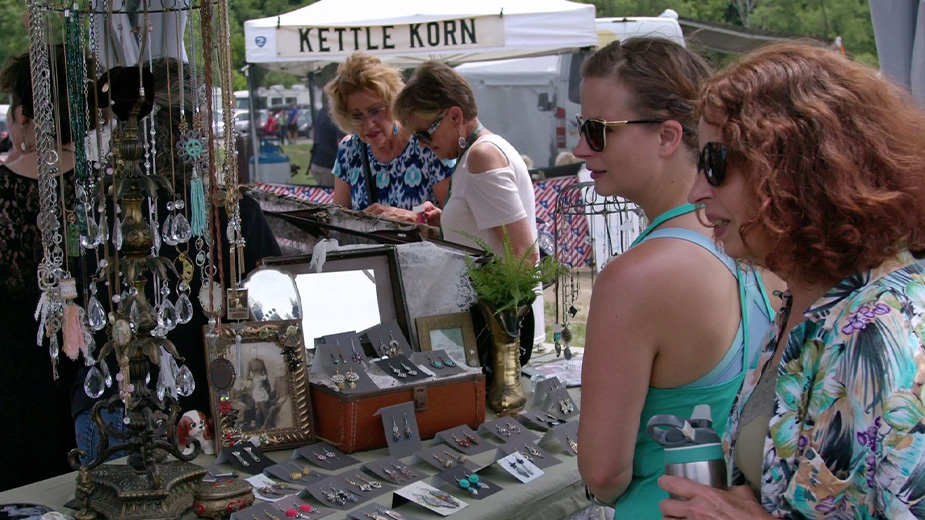Documentary Reconstructs 1876 Ashtabula Rail Tragedy
The East Palestine train derailment in February upended a community, riveted the nation and may bring about changes in the industry.
But it can’t compare to the 1876 disaster in Ashtabula, in which a bridge collapsed while a luxury train was crossing it, sending 97 people to a fiery death on a cold winter night. It was one of the deadliest man-made disasters of the 19th century.
A new documentary that tells the story of the wreck, and its aftermath, will get its local television premiere at 9 p.m. Tuesday, June 20, on Western Reserve PBS.
“Engineering Tragedy: The Ashtabula Train Disaster” was made by Len and Patti Brown of Canton, who directed and produced the two-hour film.
It will be repeated at 2 a.m. June 21 and 4 p.m. June 25 on Western Reserve PBS, and at 1 p.m. June 24 on Western Reserve’s Fusion channel. To view the trailer, click HERE.
The Browns began researching and writing the film 11 years ago. Filming took place over four years, with the team working through the pandemic.
The film premiered Dec. 29 – the anniversary of the crash – on PBS station WQLN in Erie, Pa., which is the sponsoring station.
It has been nominated in the regional Emmy Awards Central Great Lakes region – which extends from Buffalo to Indianapolis – in five categories: historical documentary, special effects and animation, writer, narrator and director of photography. The awards ceremony is today, June 17, in Cleveland.
“Engineering Tragedy” is a historical disaster film that uses actors to reenact key scenes and includes interviews with historians and engineering experts.
It sheds light on a largely forgotten story that in many ways foreshadowed February’s crash in East Palestine.
“It is history repeating itself in the sense that when oversight and inspection wanes, bad things happen,” said filmmaker Len Brown, who is also the narrator.
“Both stories were national news,” he continued. “The Ashtabula wreck brought about changes in bridge building laws and [led to mandatory] engineering consultation and other regulatory rules for railroads. Its impact is still felt today.”
As the title implies, the bridge’s 150-foot truss had several engineering flaws, one of which caused the collapse. The documentary uses animation to explain and illustrate what went wrong and why.
The bridge incorporated the Howe truss, an all-iron variation of a then-common truss that used only wood as a construction material. The massive increase in weight caused by using iron, along with other design defects, made the Howe truss weaker and more likely to fail – although the bridge was in service for 11 years before it collapsed.
The patent for the Howe truss design was owned by wealthy industrialist Amasa Stone, who also owned the Lake Shore and Michigan Southern Railroad, which ran through Ashtabula.
Stone used the Howe truss in building the Ashtabula River Bridge, which was being crossed by a luxury passenger train during a snowstorm on the night of the tragedy. The deck of the bridge was 70 feet above the water.

After the disaster, Stone became an outcast and devoted the rest of his life to altruistic causes in the Cleveland area in an effort to rehabilitate his image. However, he could not shake the shadow of the disaster and would die by suicide.
It was not the only death in the aftermath of the catastrophe. The head engineer of the Lake Shore and Michigan Southern Railroad would later be found murdered after he gave damning testimony about the bridge design to Congress. His murderer was never found.
The film also takes pains to describe how societal conditions of that era itself influenced decision-making. America was in a period of rapid post-Civil War economic growth and industrialization, and the railroads were key.
Ohio was the nation’s transportation crossroads at that time and had more rail lines and bridges than any other state.
Unfortunately, it was also a period in which the captains of industry wielded more power than elected officials. They built their empires with little to no regulatory oversight.
“Engineering Tragedy” is easily the most ambitious film made by the Browns, who have made other documentaries and film segments for PBS.
Len Brown was the director and director of photography. Patti Brown and David Simmons were the writers. Matt McComb handled the special effects.
Once the Browns started researching the tragedy, they sensed it was a story that had never been properly told.
“We realized it was a lost story in American history,” Len Brown said. “We found just one book on it and a few newspaper articles. There was no film made.”
Rutherford B. Hayes was the governor of Ohio at the time and also president-elect. It was an era marked by public outrage over shoddy bridge construction and maintenance.
“There were 25 bridge collapses per year at that time,” Brown said, describing the Ashtabula tragedy as the straw that broke the camel’s back.

The film was made with a small budget; its 350 actors, experts and crew members volunteered their services. One of the project’s biggest expenses was obtaining a snow-making machine to recreate the disaster scene, Brown said.
Landing the backing of WQLN in Erie, Pa., was also instrumental in seeing the project to completion.
“Having WQLN on board enabled us to get grants,” Brown said. “We had the power of PBS behind us.”
The city of Ashtabula is in the viewing area of WQLN, and the filmmakers presented a public screening in that city in December that drew 1,600 people.
Realizing its quality and the high level of interest, Western Reserve PBS sought permission from WQLN to air the film, said Diane Steinert, communications director of Western Reserve PBS. The film will also be made available to other PBS stations, she said.
To promote its premiere in the Akron-Cleveland-Youngstown markets, Western Reserve had a public screening June 9 at the Akron Civic Theatre. The screening drew more than 450 people.
“Some of the characters featured in the production’s reenactments were present in full costume,” Steinert said.
Pictured at top: Filmmakers Len and Patti Brown of Canton.
Copyright 2024 The Business Journal, Youngstown, Ohio.



